Munich, Germany / Aspen, USA - June 30, 2011 - U.S. and Canada Green City Index analyzes the environmental sustainability of 27 major metropolitan areas in both countries. San Francisco grabbed the mantle of "greenest" major city in the U.S. and Canada Green City Index, with New York, Seattle, Denver and Boston rounding out the top five U.S. cities.
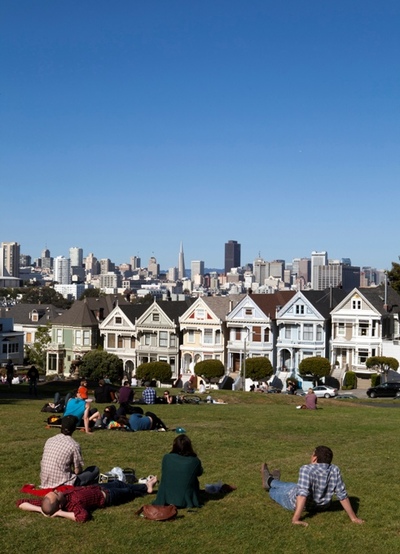 |
San Francisco grabbed the mantle of "greenest" major city in the US and Canada Green City Index, with New York, Seattle, Denver and Boston rounding out the top five US cities.
The US and Canada Green City Index analyzes the environmental sustainability of 27 major metropolitan areas in both countries.
Courtesy of Siemens |
| |
Munich, Germany / Aspen, USA - June 30, 2011
San Francisco grabbed the mantle of "greenest" major city in the U.S. and Canada Green City Index, with New York, Seattle, Denver and Boston rounding out the top five U.S. cities.
 |
Atlanta, the capital of the U.S. state of Georgia, is a regional economic hub, with one of the highest concentrations of Fortune 500 companies in the U.S. Its economy is service intensive, generating a GDP of $42,200 per capita. The wider metropolitan area has a population of 5.5 million. The city's strongest performance in the Index is in buildings, due to the highest percentage of LEED-certified buildings of all evaluated cities. Atlanta is undertaking efforts to improve its sustainability, in part by securing grants for a range of environmental projects.
Courtesy of Siemens |
| |
The unique study conducted by the Economist Intelligence Unit (EIU), and commissioned by Siemens, assesses and compares 27 major U.S. and Canadian cities on environmental performance and policies across nine categories – CO2 emissions, energy, land use, buildings, transport, water, waste, air quality and environmental governance.
 |
Boston is the capital of the U.S. state of Massachusetts and the largest city in the New England region. 4.6 million people live in the wider metropolitan area. Historically a center of shipping and manufacturing, the city's economy has largely shifted to services. Today finance, insurance, and research drive the economy, which generates a GDP of $57,100 per capita – the fourth-highest income in the Index. The city's good overall ranking is mainly driven by its low energy consumption per unit of GDP, strong green energy policies, and low water consumption.
Courtesy of Siemens |
| |
"The Green Cities Index demonstrates that America's cities are the driving force behind the nation's sustainability efforts," said Eric Spiegel, president and CEO, Siemens Corp.
"Despite the fact that we do not have a federal climate policy in the United States - and no federal carbon standard - 21 of the 27 cities in the index have already set their own carbon reduction targets. Cities are creating comprehensive sustainability plans, utilizing current technology and proving everyday that we don't have to wait to create a more sustainable future."
 |
Calgary is the largest city in the Canadian province of Alberta, with 1.1 million people living in the metropolitan area. The city is located about 400 miles south of the oil sands, one of the world's largest sources of petroleum. Therefore, the oil and gas sector is the biggest contributor to the city's GDP, which sums up to $50,200 per capita. Calgary comes in first in the water category for consuming little water, a low leakage rate, and highly regarded water policies. Calgary ranks lower in other categories, but places higher when compared to other low-density cities.
Courtesy of Siemens |
| |
 |
Charlotte, located in the southern U.S. state of North Carolina, is an important financial center and home to several of the U.S.'s largest banks. It is the third-most prosperous city in the Index, generating a GDP of $57,700 per capita. The wider metropolitan area has a population of 1.7 million. In 2009, the U.S. Department of Energy awarded the city a $6.8 million Energy Efficiency and Conservation Block Grant. This grant supports projects designed to reduce emissions and energy consumption, create new green jobs, and increase the use of renewable technologies.
Courtesy of Siemens |
| |
 |
Chicago is the third-largest city in the Index, with 9.6 million people living in the wider metropolitan area. Home to many U.S. companies' headquarters and a major financial center, Chicago is the economic engine of the U.S. Midwest and generates a GDP of $45,400 per capita. The city faces considerable environmental challenges, but its leadership and citizenry have demonstrated a commitment to improve the area's future environmental impact. Its strongest score in the category of transport is due mainly to the city's comprehensive public transit system and robust policies.
Courtesy of Siemens |
| |
The study of U.S. and Canadian cities provided some important key findings.
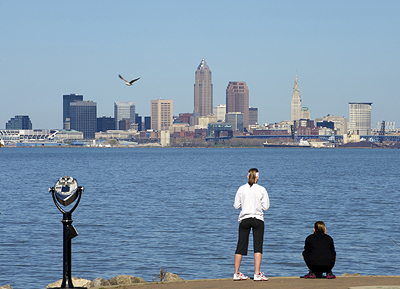 |
Located on the shores of Lake Erie, Cleveland is one of the smaller U.S. cities in the Index. 2.1 million people live in the wider metropolitan area. The economy is more industry-oriented than most of the other cities and generates a GDP of $41,400 per capita. Cleveland faces sizeable challenges in the areas of CO2 emissions, land use, buildings, and waste. However, the city has introduced some innovative programs and policies to improve both its transportation and environmental performance. It also has committed to increase the share renewable energy.
Courtesy of Siemens |
| |
Notably, cities that performed best in the rankings are the ones that have comprehensive sustainability plans that encompass every aspect of creating a greener future including transportation, land use, energy use, carbon dioxide emissions, and water.
 |
Dallas is situated in the U.S. southern state of Texas. 6.4 million people live in the wider metropolitan area. Dallas' economy is dominated by banking and energy, and it is also home to a large number of big-name telecom manufacturers. With a GDP of $48,900 per capita, it falls among the Index's mid-income cities. High temperatures place demands on energy consumption, but the city is responding by adopting renewable energies. It also has signaled its intention to improve its overall green performance and to exceed environmental compliance requirements.
Courtesy of Siemens |
| |
And while there is a correlation between wealth and environmental performance, it is weaker in the U.S. and Canada than in Europe and Asia.
 |
Denver is the capital of the U.S. western state of Colorado and is home to 2.6 million people in the larger metropolitan area. Local economic activity is dominated by transportation, telecommunications, aerospace, and manufacturing. The city generates a GDP of $49,000 per capita. Denver scores well for its clean and efficient energy policies, green action plan, green management, and strong public participation. Policies are mainly driven by the Greenprint Denver Office, which plans and coordinates citywide environmental programs.
Courtesy of Siemens |
| |
"City budgets are as tight as they have ever been, but mayors are leading the charge around making their cities more sustainable because they know they can't afford to push these decisions off until tomorrow," said Alison Taylor, Chief Sustainability Officer for the Americas, Siemens Corp.
"Our goal with the Green City Index is to identify best practices, advance good ideas and provide a baseline for cities to help them set targets for themselves so that they can serve as role models for others with their innovative policies."
 |
Detroit is located in the U.S. northern state of Michigan, with 4.4 million people living in the wider metropolitan area. Traditionally a center of automobile manufacturing and home to three big automobile companies, the "Motor City" has had to restructure its economy away from a reliance on auto manufacturing. The GDP stands at $40,300 per capita, below the Index average. The city faces challenges in all environmental categories, but has taken steps to improve its non-motorized transport infrastructure as well as the variety and quality of public spaces.
Courtesy of Siemens |
| |
 |
Houston, located in the U.S. state of Texas, has the Index's second-largest administrative area at 579 square miles. 5.9 million people live in the wider metropolitan area. The city's goods-intensive economy generates a GDP of $48,000 per person. Houston does relatively well at coordinating green initiatives across multiple departments and informing citizens and businesses about ways to be more environmentally friendly. Funding has been drafted for brownfield regeneration and for converting the city fleet to cleaner fuel, so Houston has the potential to improve its future overall performance.
Courtesy of Siemens |
| |
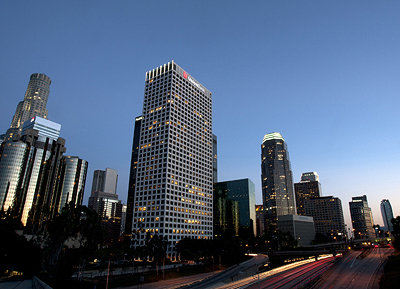 |
The Los Angeles metropolitan area spans across five counties and boasts a population of 12.9 million people, making it the second-largest city in the U.S. behind New York. Media production and financial services dominate the economy, and the city generates a GDP of $47,200 per capita. LADWP, the local water and electricity utility, has played a lead role in reducing energy consumption and cutting carbon emissions. Los Angeles also excels for recycling, boasting the second-highest recycling rate in the Index at 62%, and aims to become a front-runner for e-mobility.
Courtesy of Siemens |
| |
The scope of the U.S. and Canada Green City Index is unique.
 |
Miami is the smallest city in the Index in terms of area, but it has a rather large population with 5.5 million people living in the wider metropolitan area. The economy is more service-oriented than in most other cities and generates a GDP of $39,500 per person. The city has managed to preserve historical areas and protect the nearby Everglades wetlands. It's best ranking is in CO2 with some of the lowest CO2 emission levels and ambitious reduction targets. It also scores well for its high population density and programs to improve and expand green spaces.
Courtesy of Siemens |
| |
The nine categories are based on 31 individual indicators - 16 of which are quantitative (e.g. consumption of water and electricity per capita, recycling rate, and use of public transportation) and 15 qualitative (e.g. CO2 reduction targets, efficiency standards and incentives for buildings, and environmental governance).
 |
Minneapolis is comparatively small both in terms of area and population. 3.3 million people live in the wider metropolitan area. With a GDP of $50,200 per capita, Minneapolis is one of the high-income cities in the Index. Minneapolis was one of the first cities in the U.S. to incorporate environmental sustainability into its city planning. It has not only developed a comprehensive environmental strategy, but it has also taken action to implement policies aimed at improving areas such as water, waste, and transportation infrastructure.
Courtesy of Siemens |
| |
A key element of the study is the comparability of the results from each city - within the individual categories and in the overall evaluation.
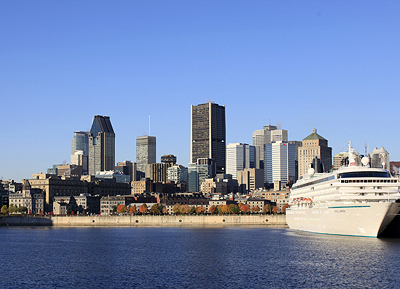 |
Montreal is the largest city in Canada's French-speaking province of Quebec, with 3.6 million people living in the metropolitan area. The city boasts one of the largest inland ports in the world, and goods make up 20 percent of employment. Montreal generates an estimated GDP of $31,500 per capita, which is the lowest in the Index. The city's overall performance is in part a result of its low income and limited funding for environmental initiatives. However, the city excels in transport with a well-developed public transit system and the second-highest share of non-automobile commuters.
Courtesy of Siemens |
| |
The study also includes in-depth city portraits that reveal the strengths and weaknesses of each urban center, while also highlighting initiatives and projects from which other cities can learn.
 |
New York City is the largest city in the U.S., with some 19 million people living in the metropolitan area. A global financial and business capital, New York City's economy is 91 percent service based. The city is the economic powerhouse of North America and boasts a GDP of $56,900 per person. In the Index, New York is among the top-3 cities and excels for having the highest population density and highest share of workers commuting by public transport, bicycle, or foot. Measured against other large cities only, New York would rank first most categories.
Courtesy of Siemens |
| |
"Generally speaking, American cities fared well as compared to other global regions in the areas of air and waste policies as well as recycling and water infrastructure," said Tony Nash of the Economist Intelligence Unit.
"While public transportation was well-supported and incentivized in a number of cities, it was clear that take up is limited outside of the most densely populated cities. CO2 emissions and electricity use are also notably higher in the U.S., but the evolving policy environment at local, state and national levels are opening up significant areas for improvement."
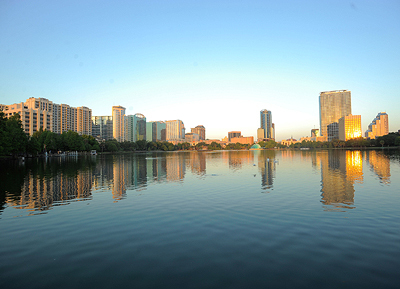 |
Orlando is located in the U.S. southern state of Florida. Home to several of the country's largest theme parks and resorts, Orlando's tourism sector dominates the local economy, which generates a GDP of $41,800 per person. The wider metropolitan area is home to 2.1 million people. High average temperatures strain energy demand because of air conditioning, but the city also boasts a relatively high number of LEED-certified buildings and has one of the strongest set of policies for clean and efficient energy.
Courtesy of Siemens |
| |
 |
Ottawa, the capital of Canada, is the Index's largest city in terms of area, but only 1.1 million people live in the metropolitan area. Ottawa's economy, dominated by services, is based primarily on housing the federal government and generates a GDP of $38,500 per capita. The city receives good marks for having the Index's highest percentage of green spaces and low CO2-emissions, as compared to other cities. However, the low population density and extreme climate are principal strains on the environment.
Courtesy of Siemens |
| |
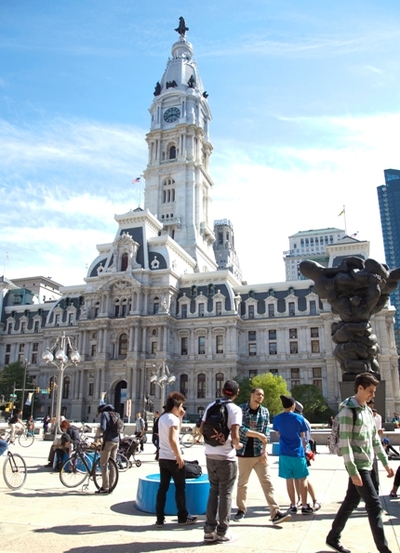 |
Philadelphia, the largest city in the U.S. state of Pennsylvania, is home to 6 million people in the wider metropolitan area. It has a broad-based economy that ranges from pharmaceuticals and financial services to shipping and manufacturing, generating a GDP of $46,200 per capita. Philadelphia receives good results for its green action plan, strong public participation in environmental management, and low overall air pollution levels. The city's biggest challenge is in the water category, with one of the highest leakage rates (26.5%) in the Index.
Courtesy of Siemens |
| |
A panel of global experts in urban environmental sustainability advised the Economist Intelligence Unit in developing the methodology for the study.
 |
Phoenix is the capital of the U.S. state of Arizona and home to 4.4 million people in the wider metropolitan area. With a services-oriented economy, including a large contribution from tourism, Phoenix has been one of the U.S.'s fastest growing cities in the last 10 years. Nevertheless, the GDP sums up to $37,300, which is well below the average. The city has mandated that by 2025, 15 percent of its energy come from renewable sources. Transport and buildings remain challenging areas, mainly owing to the city's large area, heavy reliance on cars, and a current lack of LEED-certified buildings.
Courtesy of Siemens |
| |
The 27 cities selected were chosen to represent a number of the most populous metropolitan areas in the United States and Canada.
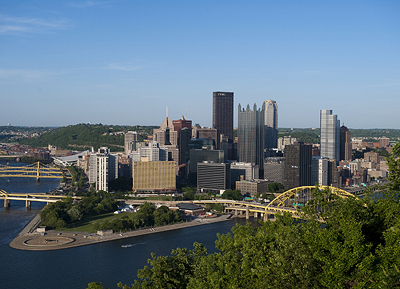 |
Pittsburgh, located in the U.S. northeastern state of Pennsylvania, was once home to a thriving steel industry. Today companies in the finance, technology, services, and health care sectors dominate the economy, which generates a GDP of $39,400 per capita overall. The wider metropolitan area has a population of 2.4 million. Although the city ranks in the Index's lower half, it can build on some strong points, such as robust policies on LEED-certification for buildings, recycling efforts, and a strong public transit supply.
Courtesy of Siemens |
| |
The list includes the top 20 U.S. combined statistical areas, and the top 5 Canadian census metropolitan areas.
 |
Sacramento is the capital of the U.S. state of California with a population of 2.1 million people in the wider metropolitan area. The government is the largest employer, and services drive the local economy - but several large technology firms are based here as well. The city's GDP of $36,700 per person is the second-lowest in the Index. Sacramento records the best overall green performance by a low-income city with a high recycling rate and one of the Index's lowest levels of air pollution. Its electricity consumption is relatively high, but the city heavily invests in solar power.
Courtesy of Siemens |
| |
Expert panelists suggested the addition of Miami and Phoenix due to population and growth rates.
 |
San Francisco, located in the U.S. state of California, is the overall leader in the Index. It is one of the smallest cities in terms of area, but it is the second most-densely populated one with 4.3 million people living in the metropolitan area. San Francisco is a major financial hub, but tourism and the high-tech sector also drive the local economy, generating a GDP of $60,300 per person. The city's exceptional performance in the Index is partly due to partnering with the private sector on innovative green initiatives, such as energy-awareness programs and the promotion of environmentally friendly commuting.
Courtesy of Siemens |
| |
Portland did not make the list based on the ranking criteria, but is highlighted in the report.
 |
Seattle is located in the U.S. northwestern state of Washington and is home to 3.4 million people in the wider metropolitan area. The economy is goods-intensive, owing largely to manufacturing companies based there, which are attracted by Seattle's busy seaport. The GDP sums up to $54,900 per capita. Seattle has set many environmental goals over the past decade, such as to become carbon neutral in the distant future. It ranks first in the buildings category, which was helped by mandating LEED-certification for municipal building projects earlier than most other cities.
Courtesy of Siemens |
| |
Announced at the 2011 Aspen Ideas Festival, the U.S. and Canada Green City Index is the fifth study in the Green City Index series.
 |
St. Louis, located in the U.S. state of Missouri at the border of the Mississippi River, is still the second-largest inland port in the U.S. The metropolitan area is home to 2.8 million residents, and the GDP per capita, at $37,600, is the fifth-lowest in the Index. In some areas, such as water treatment and distribution, the city relies on a regional authority, which has limited the city's ability to initiate environmental programs and policies. However, the Missouri state government has enacted a renewable energy standard that is likely to have a positive impact on St. Louis' performance.
Courtesy of Siemens |
| |
Other indices in the series cover Europe, Latin America, Asia, and Germany.
 |
Toronto is the largest city in Canada and the fourth-largest in the Index. Its quickly growing metropolitan area includes 5.1 million people. The capital of the province of Ontario is a center for Canada's finance and media industries, generating a GDP of $45,000 per person. Toronto is one the colder cities in the Index, which places large burdens on its energy needs. But when compared to other cold-weather cities, it places first. The city's good result in the waste category is due to a high recycling rate (44%) and well-regarded waste-reduction policies.
Courtesy of Siemens |
| |
 |
A coastal city in western Canada, the Vancouver metropolitan area is home to some 2.1 million people, making it the third-most populous city in the country. Vancouver houses Canada's largest port, and its economy is dominated by shipping, forest products, and mining. The GDP, at an estimated $37,500 per person, is the fourth-lowest in the Index. The city also has the Index's lowest CO2 emissions in terms of both population and GDP and ranks in the top three for air pollutant emissions. Compared to other low-income cities, Vancouver places first overall for low income.
Courtesy of Siemens |
| |
 |
Located on the Potomac River, Washington D.C. is the U.S. capitol with 5.5 million people living in the metropolitan area. The federal government dominates the economy, but it also houses a wide array of international institutions and research centers. Washington generates the highest GDP in the Index, at $60,500 per person. The city scores well for its strong green action plan, a high level of public participation in environmental policies, the third-highest number of LEED-certified buildings, and extensive green spaces.
Courtesy of Siemens |
| |
More information on the U.S. and Canada Green City Index:
www.siemens.com/press/greencityindex
Siemens Corporation
Siemens Corporation is a U.S. subsidiary of Siemens AG (NYSE: SI), a global powerhouse in electronics and electrical engineering, operating in the industry, energy and healthcare sectors.
For more than 160 years, Siemens has built a reputation for leading-edge innovation and the quality of its products, services and solutions.
With 405,000 employees in 190 countries, Siemens reported worldwide revenue of $102.9 billion in fiscal 2010.
Siemens in the USA reported revenue of $19.9 billion and employs approximately 62,000 people throughout all 50 states and Puerto Rico.
For more information on Siemens in the United States, visit
www.usa.siemens.com
Contact
Mr. Jörn Roggenbuck
Siemens AG
Wittelsbacherplatz 2
80333 München
Tel: +49 (89) 636-33581
joern.roggenbuck@siemens.com
Mrs. Elizabeth Cho
Siemens Corporation, USA
Tel: +1 (212) 258-4589
elizabeth.cho@siemens.com
Source: Siemens AG
http://www.siemens.com/press/en/events/2011/corporate/2011-06-northamerican.php
Eric Spiegel
President and CEO Siemens Corporation, USA
 |
Eric Spiegel
Courtesy of Siemens |
| |
Eric Spiegel joined Siemens Corporation in January, 2010 as its President and Chief Executive Officer.
As CEO in the global company’s largest single market, Mr. Spiegel is responsible for growing the U.S. business in the Industry, Energy and Healthcare sectors.
Ranked No. 1 in the Electronics, Electrical Equipment Industry sector of the Fortune Global 500, Siemens has more than $21 billion in annual U.S. sales; exports $1.6 billion in products from the U.S.; and with more than 60,000 American employees, is represented in all 50 states.
Mr. Spiegel brings to Siemens twenty-five years of global consulting experience with complex organizations in the energy, industrial and automotive fields.
Before joining Siemens, he had been at Booz & Company since 1986, most recently as a Senior Vice President and Managing Partner of the firm’s Global Energy, Chemicals and Power consulting practice.
He was also the leader of the firm’s Washington D.C. offices.
While at Booz, Mr. Spiegel was also the Managing Director of Booz Allen Hamilton International, living in Tokyo from 1999-2003.
This role included managing the firm’s business in Asia and the Middle East. Eric was an original member of the Board of Directors for Booz & Company and was previously a member of the Board of Directors for Booz Allen Hamilton, Inc.
An expert on the global energy industry, Eric is a co-author of the 2009 book Energy Shift : Game-changing Options for Fueling the Future.
The book has now been translated into Arabic, Spanish and Japanese.
Mr. Spiegel holds an MBA from the Amos Tuck Graduate School of Business Administration at Dartmouth College (Edward Tuck Scholar) and received his BA with Honors in Economics from Harvard University (Harvard Scholar).
Mr. Spiegel is on the Board of Trustees of Ford’s Theatre and the Board of Advisors of the Dartmouth Tuck business School.
Mr. Spiegel, an avid sports fan and golfer, is based in Washington, D.C., where he lives with his wife, Doreen, and their two children, Jessica and Allan.
Source: Siemens AG
http://www.siemens.com/press/pool/de/biographien/2011/Biography-Eric-Spiegel-e.pdf
ASTROMAN Magazine - 2011.05.15
Largest contract: Siemens is to build ICx for Deutsche Bahn
http://www.astroman.com.pl/index.php?mod=magazine&a=read&id=974
ASTROMAN Magazine - 2011.04.18
Siemens: the Train of Ideas on European tour as an environmental embassador
http://www.astroman.com.pl/index.php?mod=magazine&a=read&id=946
ASTROMAN magazine
|

